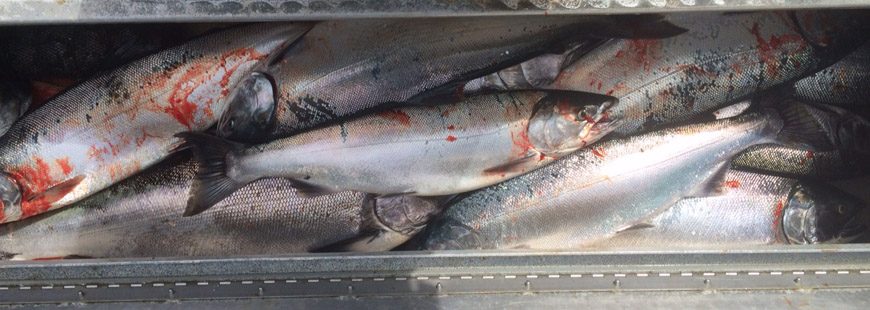Photo: 68 crab joined this 10 fish limit (eight coho, two Chinook) from the waters adjacent to Tillamook Bay on September 14, 2016.
This is the time of year when I get to write a little bit about how lucky I am to live on the West Coast, let alone Oregon. It’s the time of year when traditionally, the best fishing and crabbing takes place almost footsteps away from where I live, in Bay City, Oregon. Bay City’s motto by the way is, “The Pearl of Tillamook Bay.” There still is a booming oyster industry here.
Not only is there unimaginable bounty, but also the weather, and in particular, the offshore weather, can be incredibly awesome this time of year. September really is the best month of the year.
Although this is not necessarily a “model” year, halibut, rockfish and lingcod, salmon (of course), tuna and crab are all strong options right now. On October 1st, the deep reef fishery opens up; federal fisheries regulations allow for a short window that may coincide with tolerable ocean conditions that allows anglers to fish outside of 20 fathoms, typically rich in yelloweye rockfish, which are in a rebuilding phase.
My boat is more a nearshore and bay boat so I focus my efforts in salmon, crab and on occasion, rockfish and lingcod. There are few other times of the year, however, when the Pacific is so calm and serene, that fishing on the ocean is relaxing and very enjoyable, no matter how the fishing is actually performing. Thanks to a relatively new regulations for ocean crabbers, the sport season remains open through October 15th, so if you get to recreate in the ocean, you’re likely going to be able to take home a bounty of fresh seafood, no matter how the fishing is.
Our best day to date was just this last Wednesday, where my crew of five anglers took eight coho (a mix of mostly hatchery fish but a few wild ones too), two Chinook and 60 Dungeness crab. Their 3-day haul was 20 salmon and 120 crab. I try to omit the part that they were from California…
There are still pelicans working the nearby waters and whales remain in the lower Columbia but nature is gearing up for another winter, storing fat reserves for lean times ahead.
We do that too, and I’m not just talking about my first trip back to the Garibaldi Bakery, just a little over a week after having my appendix out. I’m trying to get some fish for the freezer! The Buoy 10 fishery, where I normally get my salmon stockpile, fell disappointingly short of producing any fish for my winter storage. I tried again out of Tillamook, after such a banner day yesterday, only to once again fall short of any fresh salmon for Thanksgiving smoked treats. I have no canned tuna, and I feel lucky enough to have a few extra salmon carcasses on hand for when the fishing is slow and I don’t gather enough crab bait for the next day’s customers.
It’s clearly going to be a leaner year than usual; no doubt partially to blame is this year’s El Niño event and the persistent warm water blob that continues to compromise the North Pacific. Most are commenting on the larger size that returning coho are exhibiting. The Chinooks that feed closer to the Gulf of Alaska didn’t seem to fare quite as well although some anglers have reported Chinook to 37 pounds in Tillamook. I’ve also heard of a 40+ pounder from the Alsea and large fish on the Nehalem as well.
What’s most important this time of year is to appreciate the bounty we have here in Oregon, so close to where we live. It’s not just happenstance; it’s through proper management of this resource that we have this bounty. We certainly have the history and the technology to over-exploit these stocks of fish and shellfish. But we’ve already seen the consequences of such debauchery so that we have a better grip on what to do, and what not to do.
Of course most of the management takes place inside the offices of our state and federal natural resource agencies, and thankfully, many of those good people actively take part in this resource. There is, however, an important component to management of this resource, which are the fishermen themselves. Like biologists, we knew the consequences of our actions. We know this resource is finite enough that we will need to sit on the sidelines again, to ensure future generations of these species continue to provide the kind of bounty we currently enjoy in our communities.
In order for this to happen properly, we’ll have to continue to take fishermen’s input and collaborate with knowledgeable biologists to bring forward sensible recommendations that ensure proper management of our collective resources. The Oregon Department of Fish and Wildlife Commission recently adopted new forage fish protections for our state waters. It was a proactive move with no impact to local fisheries. We’re past the time where we can rely on reactionary measures; we need to keep looking forward, taking climate change, sea-level rise and our own population explosion into account for future management of our fisheries. The Magnuson-Stevens Act reauthorization is still on the table for Congress to reauthorize. Let’s hope that proactive management is part of the conversation.


